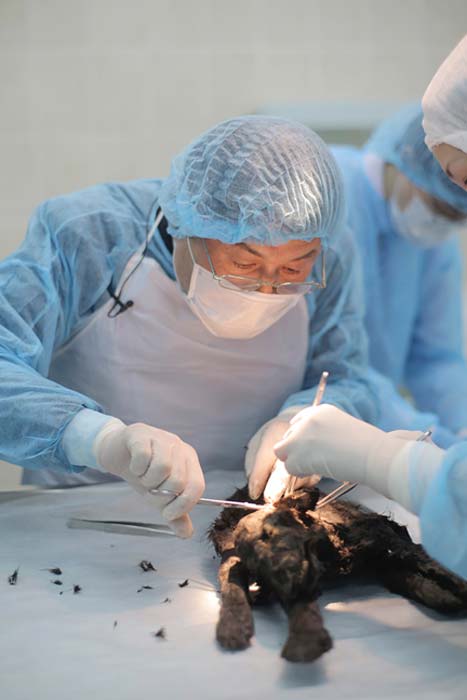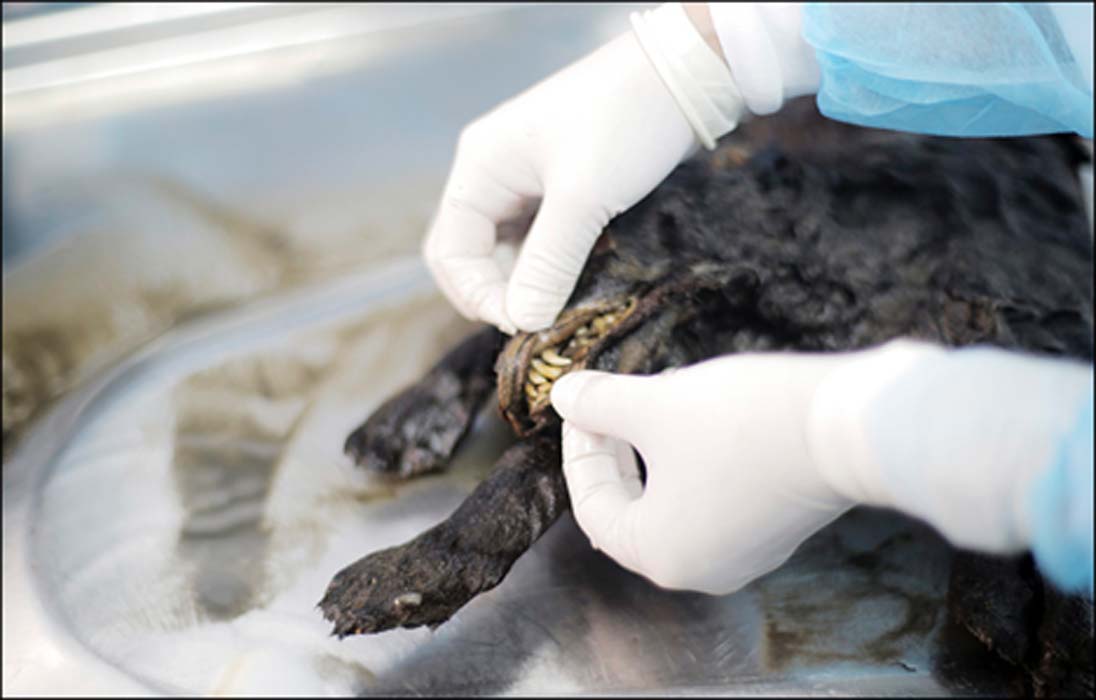Siberian Puppy Frozen for 14,300 Years is a Major RNA Breakthrough
By Svetlana Skarbo/Siberian Times
Never before has RNA - Ribonucleic acid - sequencing been carried out from so far back in time. Finding RNA on the puppy found preserved in permafrost in Tumat in 2015 is a major scientific discovery. It was either a wolf or a domesticated wolf-dog hybrid, scientists cannot be certain. In other words, this Pleistocene canid may have been an ancient pet.
Finding the Frozen Puppy RNA
Experts can be more definite about one thing: it has given up a secret amounting to a significant scientific advance. Unlike DNA, RNA has a relatively short lifespan. Yet it has been unlocked in this ancient creature from Tumat, in the Sakha Republic also known as Yakutia.

It has given up a secret amounting to a significant scientific advance. (Siberian Times)
DNA encodes the hard copy of genes, and can survive thousands of years if conditions are right. But RNA is seen as short-lived: it is the working copy of a gene. DNA analysis shows what kind of genes a species had, while RNA explains which genes were working and which were silent.
Now Dr. Oliver Smith, of Copenhagen University, and his colleagues analyzed the RNA from the liver, cartilage, and muscle tissue of the ancient animal.
- New Study Suggests that Man and Dog Have Been Close Friends for 33,000 Years
- 2,000-Year-Old Dog Burials in Siberia Reveal Relationship Between Ancient People and Their Pets
- Ancient puppy brain is well preserved as dog bares its teeth after 12,400 years
“The scientists showed that the RNA sequenced from liver tissue of the Tumat puppy was truly representative of the animal’s RNA, with many liver-specific transcripts that matched more modern samples from both wolves and dogs,” reported sci-news.com
“The canid’s transcriptome is the oldest RNA sequenced by far, surpassing the next oldest transcriptome by at least 13,000 years.”


Joint team of Russian and Korean researchers makes an autopsy of the puppy in March 2016. (Siberian Times)
Significance of the Discovery
Dr. Smith said:
“Ancient DNA researchers have previously been reluctant to attempt to sequence ancient RNA because it is generally more unstable than DNA, and more prone to enzymatic degradation. However, following our recent successes in sequencing ancient RNA from plant material, we speculated that a well-preserved animal specimen, frozen in the permafrost, just might retain enough material to sequence. To our delight, we found that not only did we find RNA from various tissues, but in some case the signal was so strong that we could distinguish between tissues in a way that makes biological sense.”
- From Mighty Bear Dogs to Breathless Bulldogs: How Human Manipulation Has Changed the Shape of Canines Forever
- Researcher Presents Evidence for Cherished Role of Prehistoric Dogs in the Siberian Arctic
- Bow Wow, Wow! The 45 million-year-old History of Dogs, And Us!
He explained:
“Knowing that RNA acts as an intermediary between DNA and proteins, both of which are more stable, it might be tempting to ask, ‘So what?’ But we think the future of ancient RNA has great potential. For example, many of the most clinically relevant viruses around today have RNA genomes, and the RNA stage is often crucial to understanding the intricacies and complexities of gene regulation. This might have repercussions when discussing the environmental stresses and strains that drive evolution.”
The findings were originally published in the journal PLoS Biology.
Top Image: Siberian puppy frozen in permafrost for 14,300 years gives scientists major RNA breakthrough. Source: Siberian Times
The article, originally titled ‘Siberian puppy frozen in permafrost for 14,300 years gives scientists major RNA breakthrough’ first appeared on The Siberian Times and has been republished with permission.



















